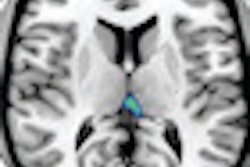"If someone gets injured, physiotherapists start their treatment," said Rolf Janka, MD, PhD, from the Friedrich-Alexander-Universität in Erlangen-Nürnberg. "But if the treatment does not lead to pain relief, the player will get an MR exam. Now, we might have the diagnostic problem of whether the MR findings are due to the injury or only the effect of the therapy."
In the study, nine healthy volunteers with no known knee problems underwent 1.5-tesla MRI (Magnetom Avanto, Siemens Healthcare, Erlangen, Germany), with a standard eight-channel knee coil.
The first MRI scans were acquired to provide a baseline image of the volunteer, followed by a second scan one hour after intensive physiotherapy for the treatment of medial knee pain at the level of the medial collateral ligament. A third MRI exam was performed 24 hours later as a follow-up.
Interpretation of the images found no edemas at the time of the baseline scan. One hour after physiotherapy, an edema was found in all volunteers at the medial collateral ligament, which increased significantly in MRI scans after 24 hours.
"In the study, we wanted to show that typical MR features of a sports-related injury, like edema or thickening of articular structures, can occur after physiotherapy," Rolf noted. "As ultrasound, x-ray, or CT is not able to show the effect of sports-related injuries on the articular structures in an objective and adequate way, MR is the modality of choice."



















